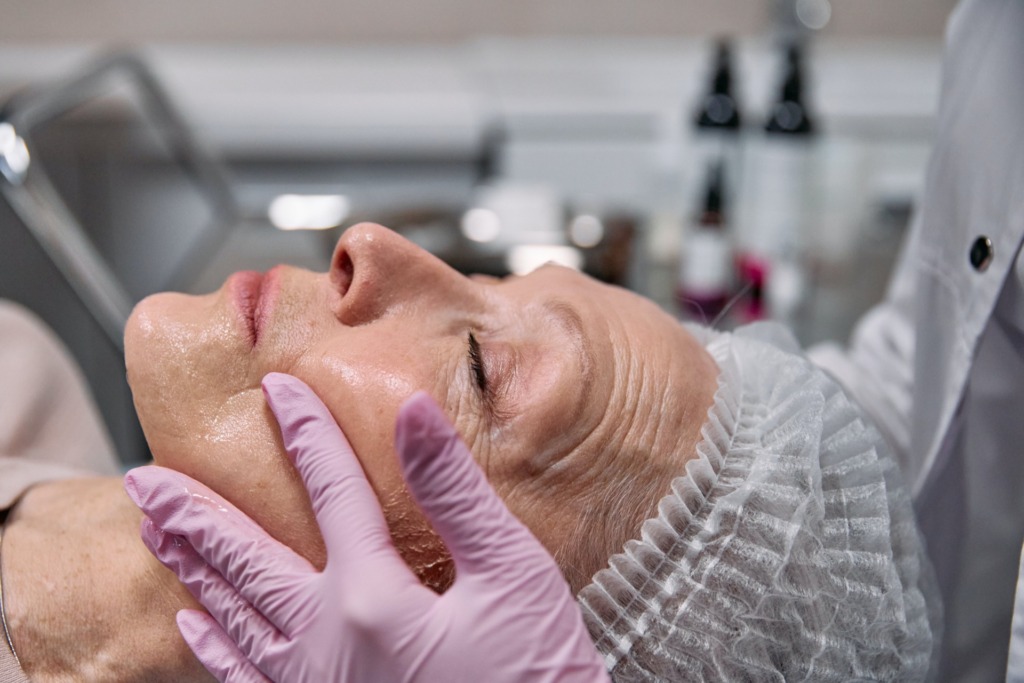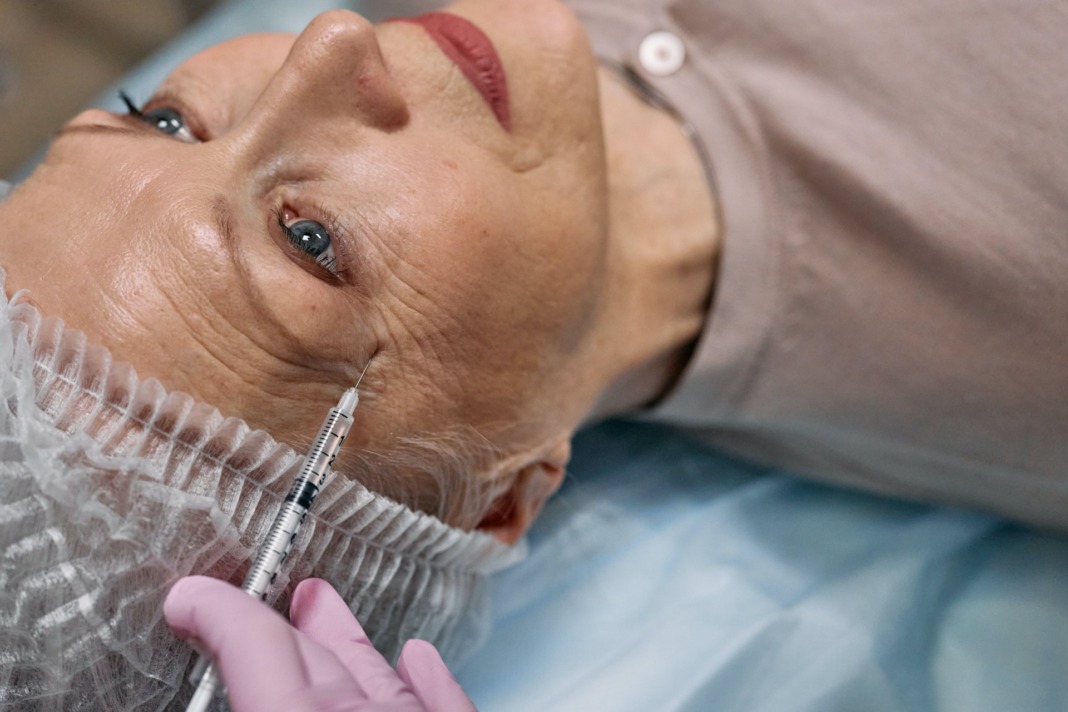In a world that values and celebrates beauty, the desire for a youthful appearance has led many people to explore various cosmetic procedures that could enhance their skin and keep them younger. These cosmetic procedures include Facelifts, Breast lift, Tummy tuck, Buttock augmentation, etc.
In this comprehensive guide, we will delve into the types of facelift procedures, important considerations, preparation steps, and the cost of getting it done.
A facelift, medically known as a (rhytidectomy), is a cosmetic surgical procedure designed to address signs of ageing in the face and neck region. As individuals age, the skin loses elasticity, and the underlying tissues and muscles may weaken, leading to the formation of wrinkles, sagging skin, and the appearance of jowls. This aims to minimize these effects by lifting and tightening the skin and underlying tissues, resulting in a more youthful and rejuvenated facial appearance.
What Facelift Can Help You Restore?
- Sagging Skin: This can tighten loose and sagging skin, particularly around the lower face and neck.
- Wrinkles and Fine Lines: The procedure can reduce the appearance of wrinkles and fine lines, especially in areas like the nasolabial folds, marionette lines, and around the eyes.
- Jowls: This surgery is effective in lifting and tightening the jowls, which are the areas of sagging skin along the jawline.
- Facial Volume Loss: While this surgery primarily addresses skin laxity, additional procedures such as fat grafting or dermal fillers may be combined to address volume loss in specific facial areas.
- Neck Bands: It can target the neck area, helping to eliminate or reduce the appearance of vertical neck bands or cords.
- Deep Creases: It offers substantial improvement, especially in areas with deeper facial creases where non-surgical treatments may be limited in their effectiveness.
- Loose Neck Skin: The surgery can tighten loose skin on the neck, commonly referred to as a “turkey neck” or “neck wattle.”
- Drooping Cheeks: It can lift and reposition the cheeks, restoring a more youthful and defined contour to the mid-face.
Note: Facelifts are cosmetic restorative treatments that cannot fundamentally alter your appearance or stop the ageing process. They also cannot address superficial wrinkles, UV damage, or skin colour anomalies. They are highly personalized surgeries that are tailored to each individual’s face and desired outcome.
Read: How to Get Rid of Hormonal Belly Fat
Types of Facelift Procedures

Traditional Facelifts
The traditional facelift addresses sagging skin and wrinkles in the lower face and neck. Below are the procedures of a traditional facelift.
- This surgery process involves incisions made around the ears, along the hairline, and beneath the chin.
- The surgeon separates the skin from underlying tissues, tightening facial and neck muscles and removing excess fat in the neck and jowls.
- Skin is repositioned naturally over the face, and surplus skin is removed.
This type is recommended for those seeking substantial improvement in moderate to significant facial ageing.
Mini Facelifts
Also known as a “weekend facelift” or “S-lift,” this procedure is less invasive than the traditional facelift.
The type focuses on specific areas, such as the jowls, lower face, and neck, with smaller incisions and a quicker recovery time. This is typically recommended for younger people with early signs of facial sagging.
Mid-Facelifts
This procedure targets the middle portion of the face, addressing sagging cheeks and the nasolabial folds.
For this procedure, the incisions are made near the hairline and around the ear, allowing the surgeon to lift and reposition tissues in the midface region. This surgery typically involves repositioning cheek fat and tightening the skin around the region.
Read: Best Dermatologist Recommended Skin Care For Women
Considerations Before Getting a Facelift
There are several things you need to consider before getting a facelift; they include the following:
Medical Evaluation: A thorough medical evaluation is crucial to determine if you are a suitable candidate for this surgery. Discuss your medical history, any existing health conditions, and medications with your surgeon.
Realistic Expectations: Understand the limitations, potential risks, and side effects of a facelift and have realistic expectations regarding the outcome. Consult with your surgeon to ensure you have a clear understanding of what the procedure can and cannot achieve.
Recovery Time: Facelifts require a recovery period, during which swelling and bruising are common — plan for time off work and social activities to allow for proper healing.
Read: Black Men Skin Care Product – Top 7 Products Every Man Needs
Preparation for a Facelift
Before you go for this surgery, you need to thoroughly prepare your expectations and understand the outcome and what you need to do before and after the process. This will help you a great deal during the period.
During the period, consult with a board-certified surgeon, and choose a qualified and experienced plastic surgeon who is board-certified. And do not fail to discuss your goals, concerns, and desired outcomes during a thorough consultation.
Preoperative Instructions: You must strictly adhere to your surgeon’s preoperative instructions, which may include abstaining from certain drugs, alcohol, and smoking in the weeks preceding the procedure. Following their instruction will help the surgery go more smoothly and help you heal properly.
Some Preoperative instructions in preparation for this type of surgery are listed below:
- Getting a blood test and/or a medical evaluation.
- Taking specific prescriptions or making changes to your present medications.
- Applying certain products to your face’s skin.
- Quit smoking.
- Avoiding certain foods and beverages.
- Aspirin and certain anti-inflammatory medicines should be avoided since they can cause excessive bleeding.
- Stop taking recreational drugs.
Arrange for Support
You should make arrangements for someone to drive you to and from your surgery. It would be best if you also planned for someone to stay with you for support during the first few days of recovery, since you may require assistance with daily activities.
Also, you may need to take up to three weeks off work if you plan on getting a more invasive facelift, such as the traditional facelift. However, less invasive surgery, like the mini-facelifts, often needs five to seven days off work. Ensure you discuss this with your surgeon before your operation so that you can plan accordingly.
Read: 10 Surprising Causes of Dry Skin
Cost Considerations
The cost can vary based on factors such as the surgeon’s expertise, geographic location, facility fees, the type, and the extent of the procedure. On average, the cost may range from a few thousand for a mid-facelift to 10,000 dollars for a traditional facelift. You should always get a detailed quote from your chosen surgeon, including all potential expenses.
Conclusion
This type of cosmetic surgery can be a transformative experience, providing a rejuvenated and more youthful appearance. However, it is crucial to approach the decision with careful consideration, realistic expectations, and thorough preparation. By understanding the types of facelift procedures, considering key factors, and preparing adequately, you can be better equipped for the process and also recover accordingly.
Always consult with a qualified and board-certified plastic surgeon to ensure a safe and satisfying result and experience.
FAQs
What’s the best age to get a facelift?
Depending on your skin and ageing time, there is no specific age for a facelift. When signs of ageing begin to develop in their 40s, 50s, or even 60s, most people go for it. Because everyone ages differently due to factors such as genetics, lifestyle, and environment, there is no “best age” to receive a facelift. Keep in mind that facelifts often last seven to ten years. Some people get the surgery in their mid-40s to early 50s, followed by a second “update” in their 60s.
What type of facelift is right for me?
Choosing the appropriate type requires careful evaluation of personal goals, facial anatomy, and the level of ageing issues. During your consultation with a board-certified plastic surgeon, they will evaluate aspects such as the location of drooping or wrinkles, skin elasticity, and your overall health conditions. Traditional facelifts rejuvenate the lower face and neck, whereas mini facelifts are less intrusive and focus on particular areas, making them ideal for those with early indications of ageing. Mid-facelifts focus on the cheeks, providing a more targeted correction.
If you need a free consultation to determine the right type for you especially if you decide to have your Facelift in Turkey, then we strongly recommend you contact the experts at Careinturkey.



